Auteur/autrice : C&A HD
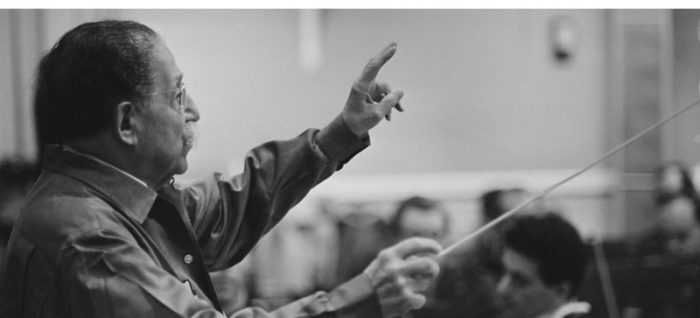
Pierre Monteux – London Symphony Orchestra (LSO)
Debussy: Prélude à l’Après-midi d’un faune – 2 Nocturnes Nuages & Fêtes
Ravel: Rapsodie Espagnole – Pavane pour une Infante défunte
London Kingsway Hall 11-13 December 1961
Prod: Erik Smith – Eng: Kenneth Wilkinson
Source: Bande/Tape: LCL 80108 (4 pistes 19 cm/s / 4 tracks 7.5 ips)
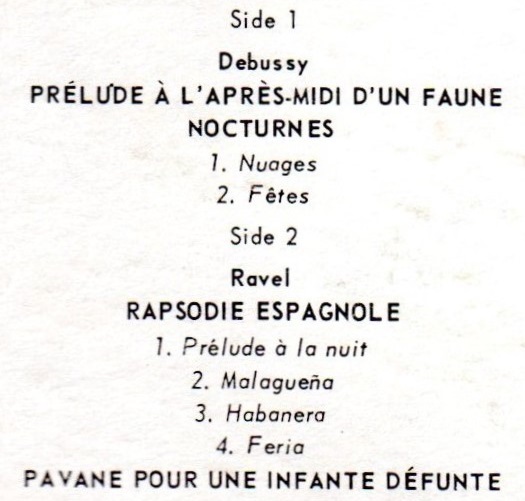

Le programme choisi par Monteux peut surprendre, mais il montre une subtile correspondance entre les deux compositeurs, les œuvres de chacun d’entre eux alternant d’une part poésie et gravité et d’autre part chaleur, énergie et brillant.
Dans le numéro de Janvier 1963 de ‘High Fidelity’, le critique a tout particulièrement souligné le caractère exceptionnel des interprétations du Prélude à l’Après-Midi d’un faune pour lequel le naturel de l’interprétation loin de tout sentimentalisme impressionniste fait l’effet d’une révélation ainsi que de la Pavane pour une Infante défunte pour sa plasticité et sa chaleur.
A propos de la Rapsodie Espagnole, le critique a souligné la chaleur et la profondeur de la prise de son à Kingsway Hall qui restitue admirablement ce qu’il appelle le ‘rougeoiement’ (‘ruddy glow’) de la palette sonore de l’orchestre.
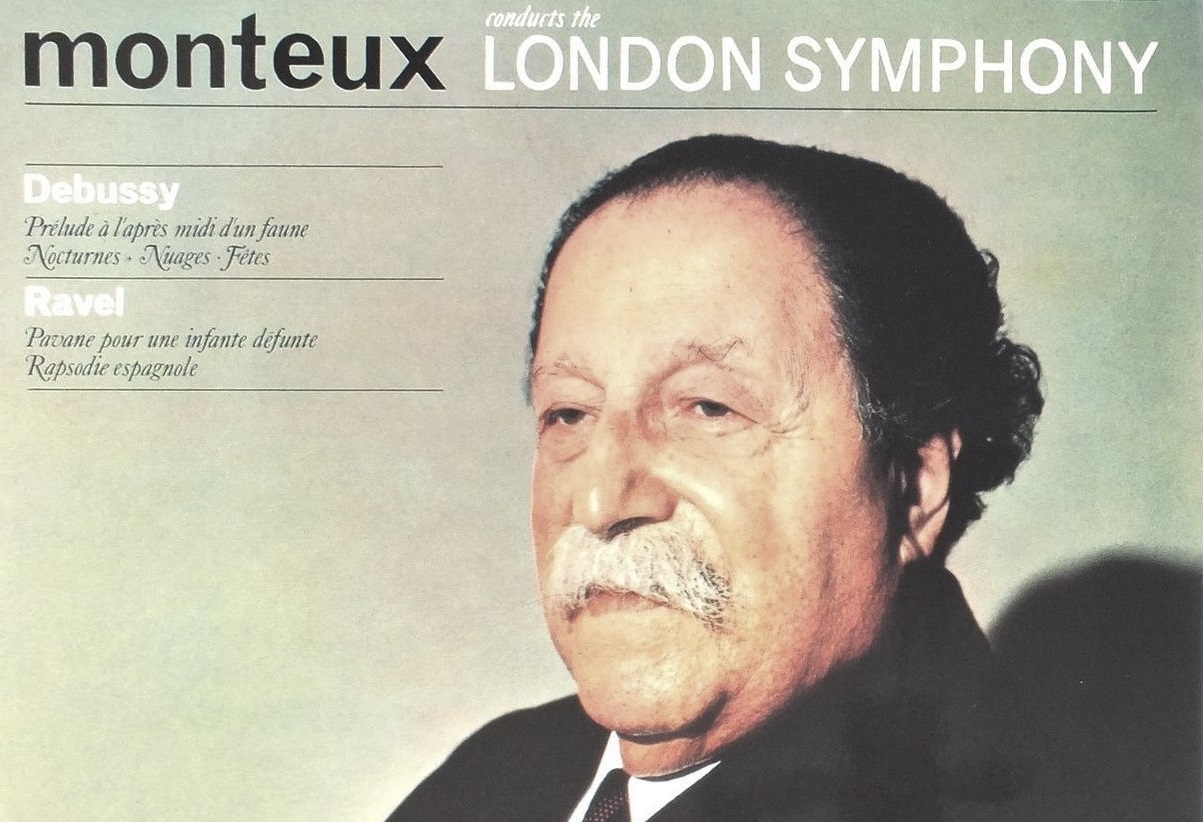
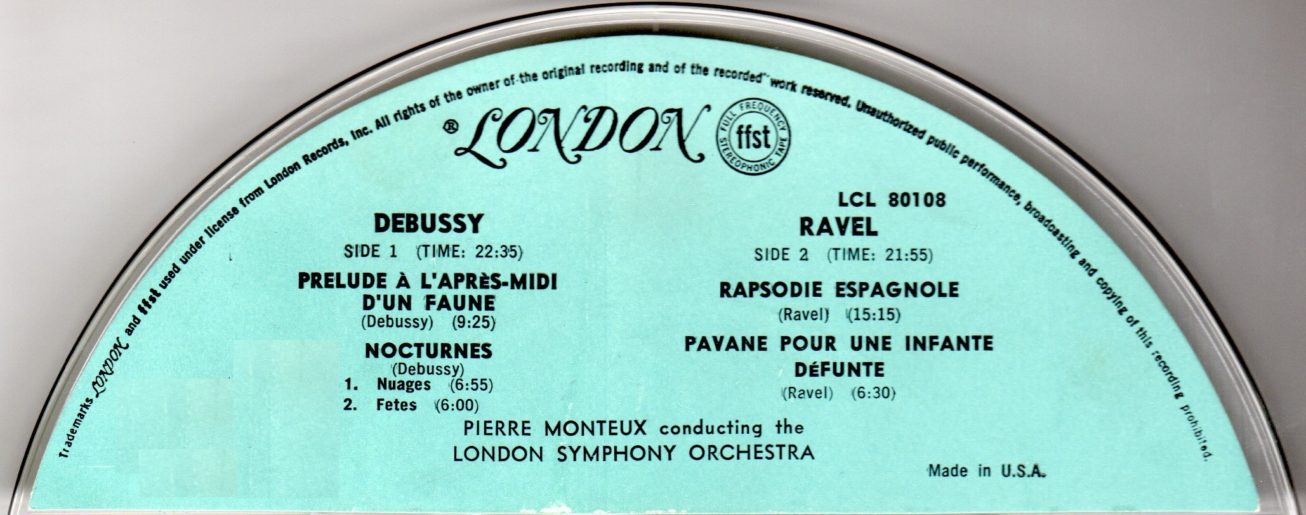
The programme chosen by Monteux may be surprising, but it shows a subtle correspondence between the two composers, the works of each of them alternating on the one hand poetry and gravity and on the other warmth, energy and brilliance.
In the January 1963 issue of High Fidelity, the critic particularly emphasised the exceptional character of the performances of the Prélude à l’Après-Midi d’un faune, for which the naturalness of the interpretation, far from any impressionist sentimentality, is a revelation, and of the Pavane pour une Infante défunte for its plasticity and warmth.
In the Rapsodie Espagnole, the critic emphasised the warmth and depth of the Kingsway Hall recording, which admirably renders what he calls the ‘ruddy glow’ of the orchestra.
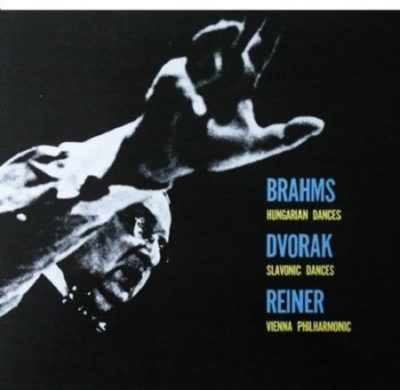
Fritz Reiner Wiener Philharmoniker (WPO)
Dvořák Slavonic Dances Op.46 n°1, 3 & 8; Op.72 n° 2 & 1
Brahms Hungarian Dances n° 5, 6, 7, 12, 13, 19, 21 & 1
Enr/Rec: Wien Sofiensaal 12, 13, 16 & 19 Juni 1960
Prod: Erik Smith – Eng: James Brown
Source: Bande /Tape: LCL-80069 (4 pistes 19 cm/s / 4 tracks 7.5 ips)

En 1960, Fritz Reiner, dans le cadre des accords entre les firmes RCA et Decca, est venu à Vienne sans donner de concert ni diriger à l’Opéra, mais seulement pour enregistrer le Requiem de Verdi, ainsi que ce disque de danses de Brahms et de Dvořák, dans lequel il se montre un maître incomparable avec une subtilité rythmique vraiment fascinante.
L’étude de la période du 12 au 19 juin 1960 montre que le plan de charge de l’orchestre (comme montré ci-dessous) était incroyablement chargé, mais fort heureusement, cela n’a pas affecté la qualité des exécutions de ces danses.
Le terme WPO désigne on le sait la formation de concert de l’Orchestre du Wiener Staatsoper dont l’effectif important permet d’assurer plusieurs prestations simultanées (Opéra, Ballets, enregistrements).
Concernant les enregistrements, Reiner a complété les 12, 13, 16, 19 & 26 juin le Requiem de Verdi commencé en mai, et entre le 12 et le 20 Herbert von Karajan a enregistré une intégrale du Fledermaus de Johann Strauss.
Pour les concerts: les 18 et 19 juin, Mahler Das Lied von der Erde sous la direction de Karajan avec Fritz Wunderlich et Hilde Rössel-Majdan.
Pour l’Opéra: le 12 et le 14 Götterdämmerung (Karajan); le 13 Aïda (Molinari-Pradelli); le 15 et le 17 Arabella (Keilberth le 15 et Hollreiser le 17); le 16 Ballo in Maschera (Molinari-Pradelli); le 18 Entführung aus dem Serail (Krips à la Redoutensaal) / Carmen (Matacic).
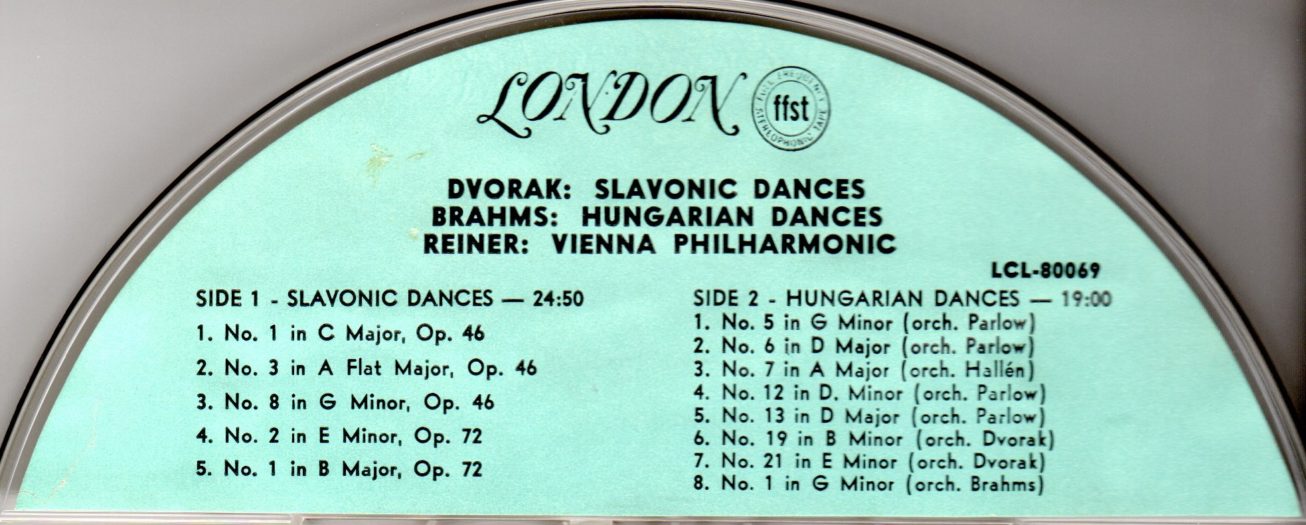
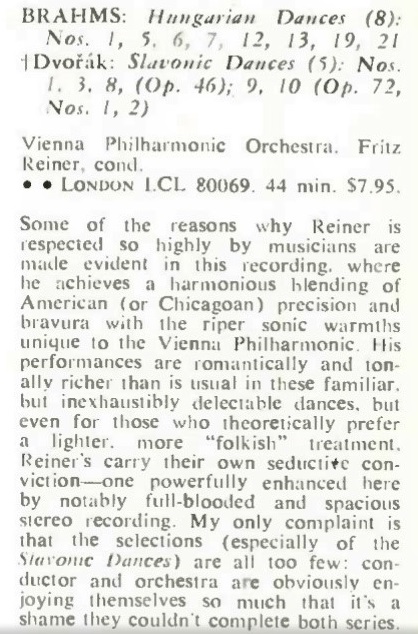
High Fidelity (July 1961)
In 1960 Fritz Reiner, as part of the agreements between RCA and Decca, came to Vienna without giving a concert or conducting at the Opera, but only to record Verdi’s Requiem and this disc of dances by Brahms and Dvořák, in which he shows himself to be an incomparable master with a truly fascinating rhythmic subtlety.
A study of the period from 12 to 19 June 1960 shows that the workload of the orchestra (as shown below) was incredibly heavy, but fortunately this did not affect the quality of the recorded performances of these dances.
The term WPO refers to the concert orchestra of the Vienna State Opera Orchestra, whose large number of members makes it possible to give several performances at the same time (opera, ballets, recordings).
Concerning the recordings, Reiner completed Verdi’s Requiem on 12, 13, 16, 19 & 26 June, which he had begun in May, and between 12 and 20 June Herbert von Karajan recorded the complete Fledermaus by Johann Strauss.
For the concerts: on 18 and 19 June, Mahler’s Das Lied von der Erde under the direction of Karajan with Fritz Wunderlich and Hilde Rössel-Majdan.
For the operas: on June 12 and 14, Götterdämmerung (Karajan); on June 13, Aida (Molinari-Pradelli); on June 15 and 17, Arabella (Keilberth on the 15th and Hollreiser on the 17th); on June 16, Ballo in Maschera (Molinari-Pradelli); on June 18, Entführung aus dem Serail (Krips at the Redoutensaal) / Carmen (Matacic).

Gerhard Hüsch – Hanns-Udo Müller & Gerald Moore (D.957 n° 7, 10, 12 & 14)
Source: 33t/LP World Records Retrospect Series SHB 65 (1980)
Enregistrement/ Recording: Berlin 1934-1939
Report/Transfer: Keith Hardwick


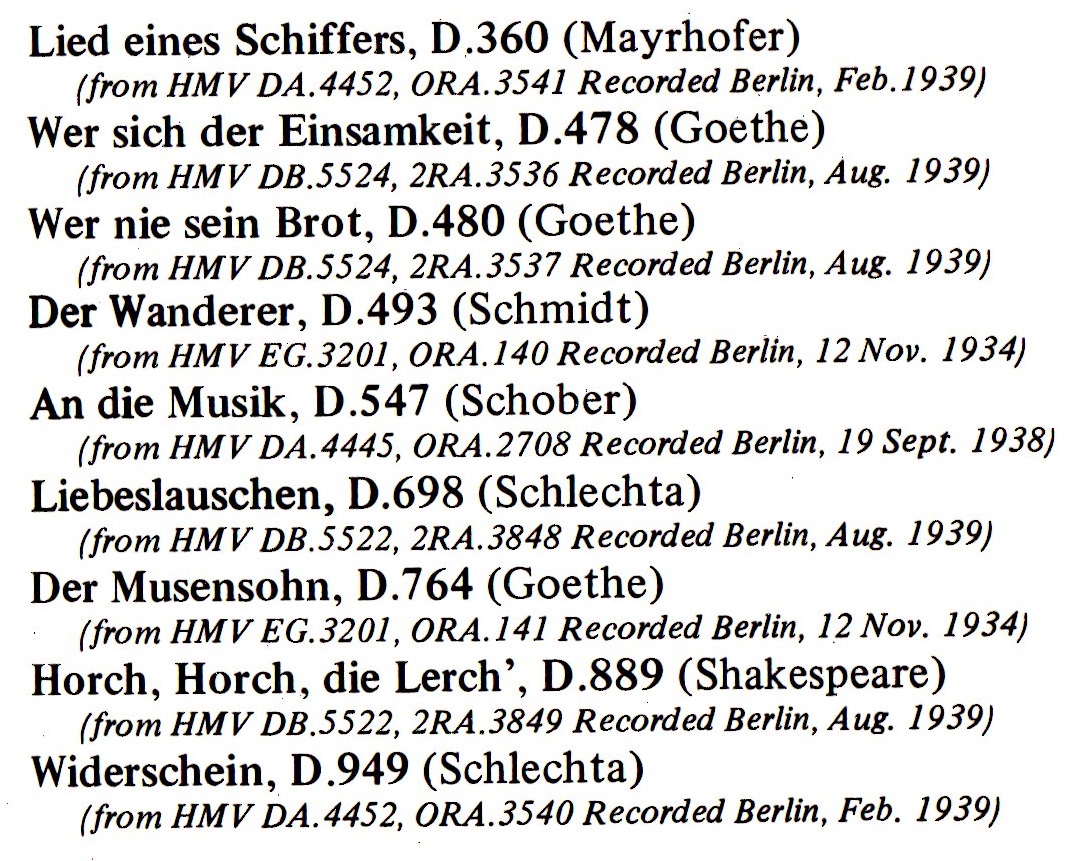
A part les cycles ‘Die schöne Müllerin ‘ et ‘Die Winterreise’ Gerhard Hüsch a enregistré avant-guerre un certain nombre de Lieder de Schubert dont 6 sont issus du recueil ‘Schwanengesang’ D.957 en y incluant Die Taubenpost (D.957 ‘n°14’ = D.965A). Trois de ces Lieder sont sur des poèmes de Heine, que le régime nazi n’allait pas tarder à interdire complètement.
Le texte joint au disque comporte quelques erreurs notamment sur les numéros de catalogue Deutsch qui ont été corrigés dans les fichiers numériques sur la base des informations de l’indispensable site https://www.schubertsong.uk .
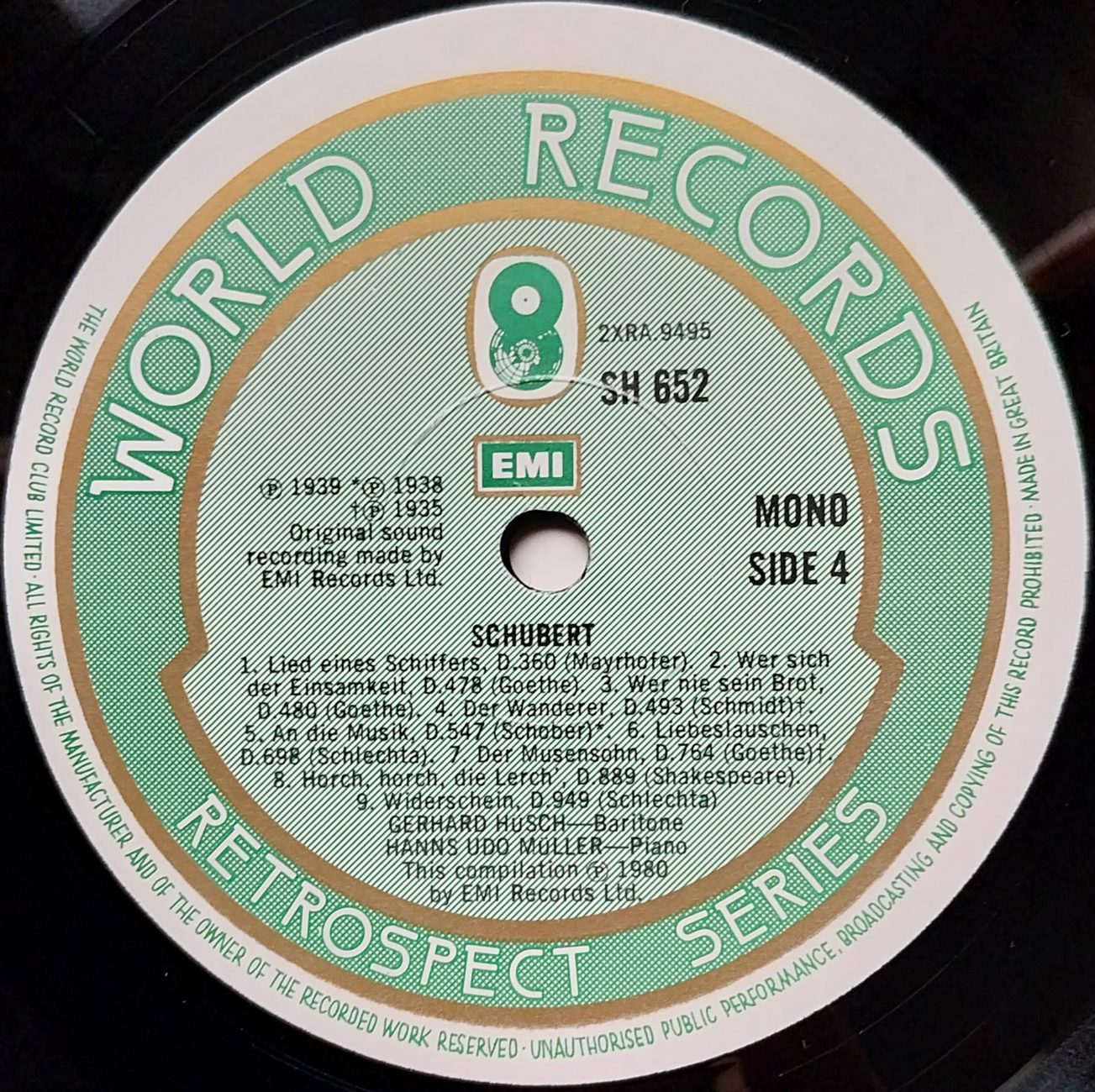
Apart from the ‘Die schöne Müllerin’ and ‘Die Winterreise’ cycles, Gerhard Hüsch recorded a number of Schubert songs before the war, six of which are from the collection ‘Schwanengesang’ D.957 if we include Die Taubenpost (D.957 ‘n°14’ = D.965A). Three of these songs are set to poems by Heine, which the Nazi regime was soon to ban completely.
The text accompanying the disc contains a few errors, notably in the Deutsch catalogue numbers, which have been corrected in the digital files on the basis of information from the indispensable website https://www.schubertsong.uk/.

Haydn Quartets Op. 76 n° 4 – 6
Tátrai Quartet: Vilmos Tátrai, Mihály Szűcs, violin I & II; György Konrád, viola; Ede Banda, cello
Enr/Rec: Budapest 1964 – Prod: Dóra Antal (n°4 & 5); János Mátyás (n°6)
Eng: László Csintalan (n°4 & 5) ; Endre Radányi (n°6)
Source: 33t/LP Qualiton LPX 1205-7
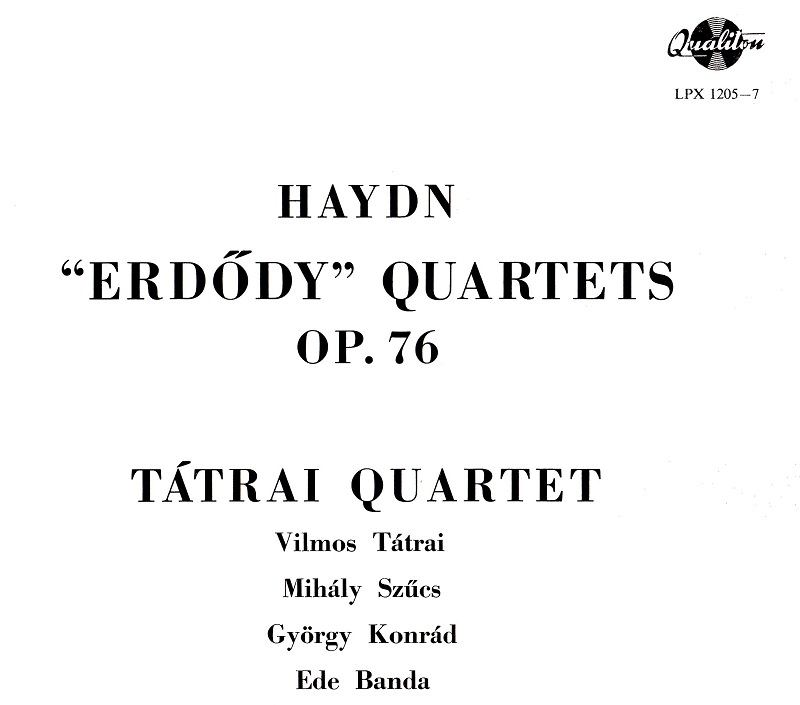

Voici le deuxième volet de l’Opus 76 de Joseph Haydn avec les Quatuors n°4 à 6 dans la version de référence du Tátrai Quartet. Bonne écoute!
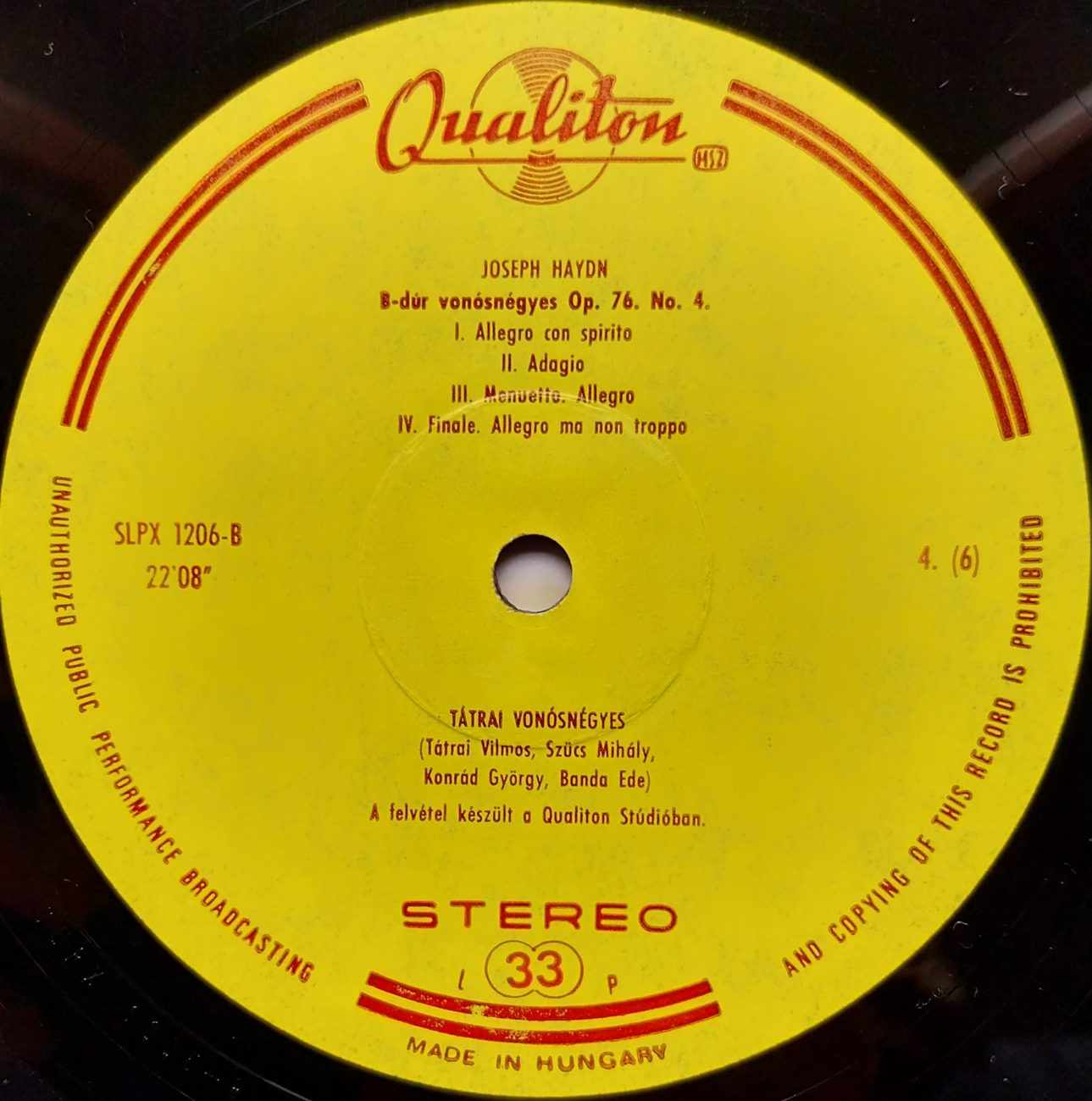


Here is the second part of Joseph Haydn’s Opus 76 with the Quartets n°4 to 6 in the reference version of the Tátrai Quartet. Enjoy your listening!

Haydn Quartets Op. 76 n° 1 – 3
Tátrai Quartet: Vilmos Tátrai, Mihály Szűcs, violin I & II; György Konrád, viola; Ede Banda, cello
Enr/Rec: Budapest 1964 – Prod: Dóra Antal (n°1 & 3); János Mátyás (n°2)
Eng: László Csintalan (n°1 & 3) ; Endre Radányi (n°2)
Source: 33t/LP Qualiton LPX 1205-7

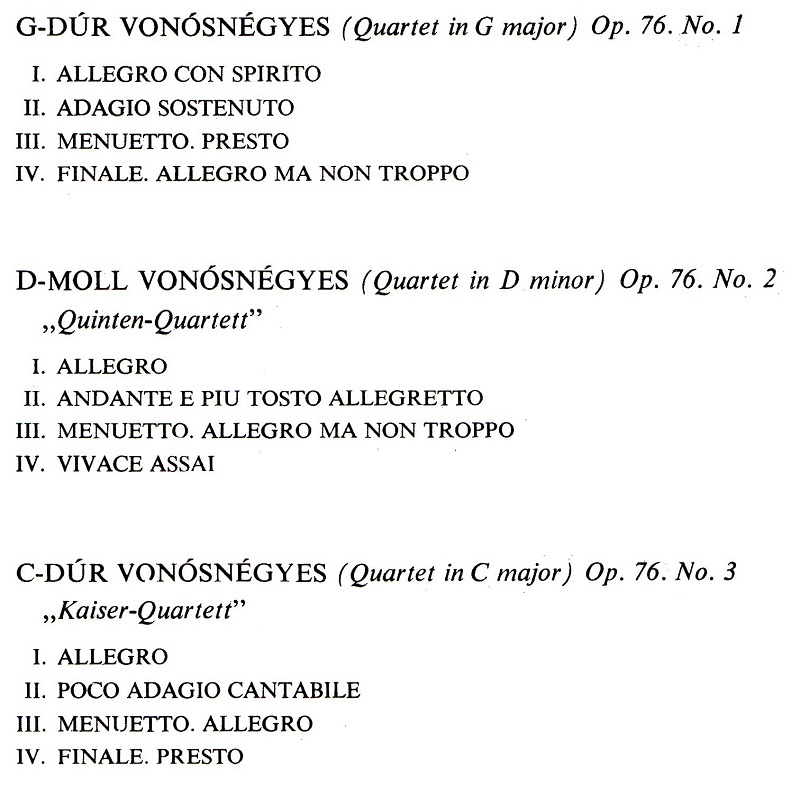
Le Quatuor Tátrai a commencé par cet Opus 76 en 1964 son enregistrement de l’intégrale des Quatuors de Haydn qu’il mettra vingt ans à mener à bien. Ces disques ont été considérés dès leur parution comme une version de référence. D’ailleurs, Sviatoslav Richter appréciait cet enregistrement. Les microsillons de la firme Qualiton ont été réalisés avec le plus grand soin depuis la prise de son jusqu’à la gravure et le pressage. Par contre, les reports en CD sous le label Hungaroton sont décevants. Un nouveau report à partir des microsillons s’impose donc.


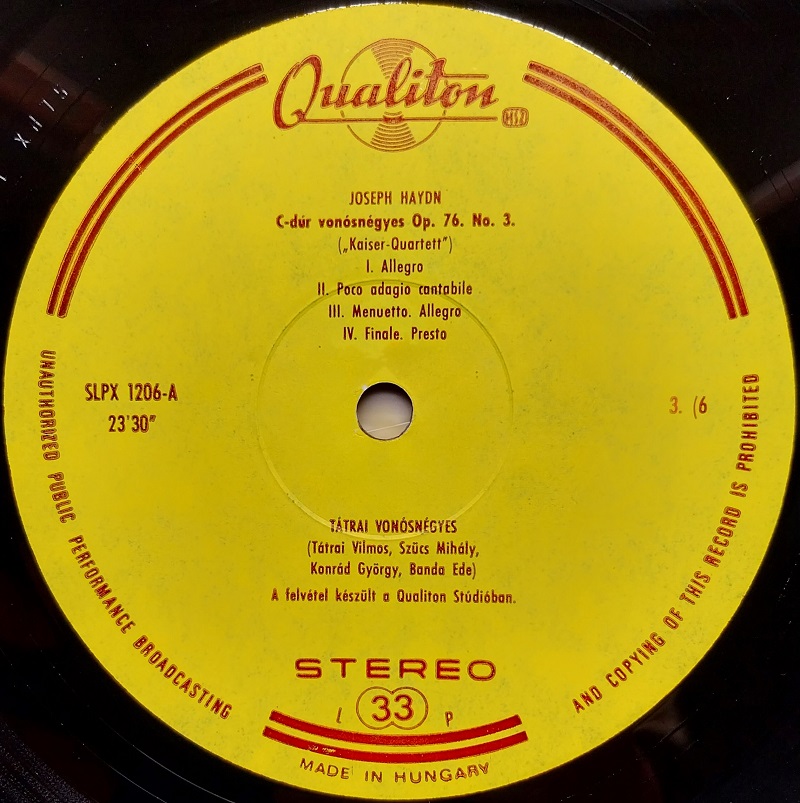
The Tátrai Quartet began their complete recording of the Haydn Quartets with this Opus 76 in 1964, a project that took them twenty years to complete. These LPs have been considered a reference version since their release. We know that Sviatoslav Richter appreciated this recording. The LPs on the Qualiton label were made with the greatest care, from the recording to the engraving and pressing. On the other hand, the reports on CD under the Hungaroton label are disappointing. A new transfer from the LPs is therefore welcome.
A la demande amicale d’un habitué de ce blog / By request of a friend of this blog.



